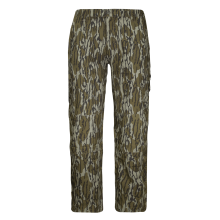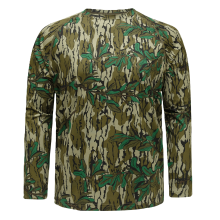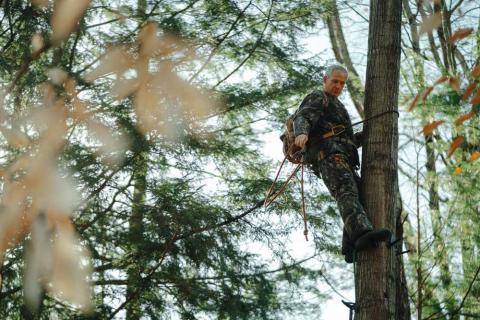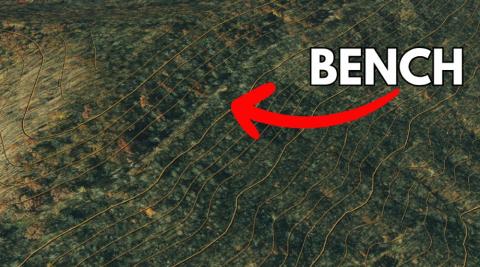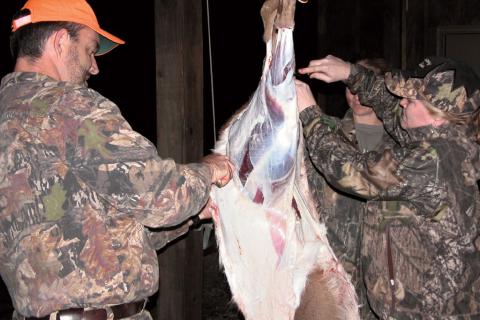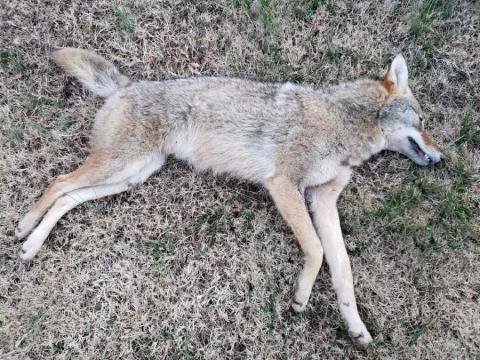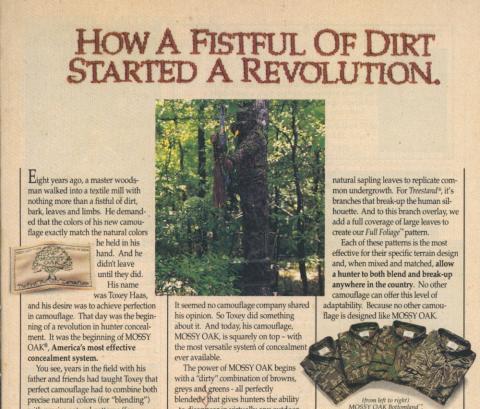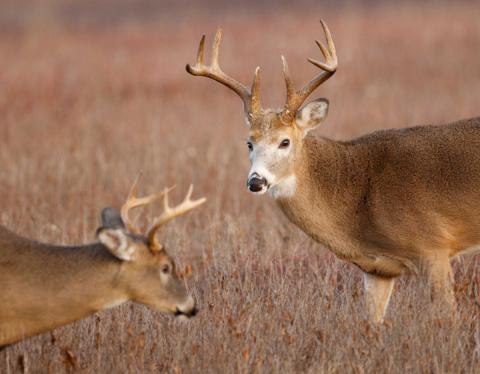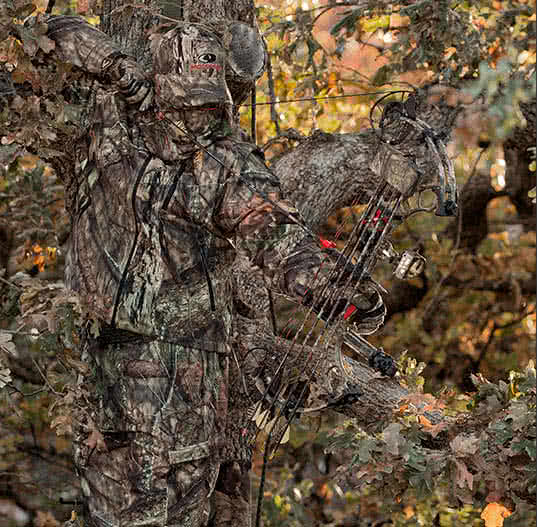Paul Annear
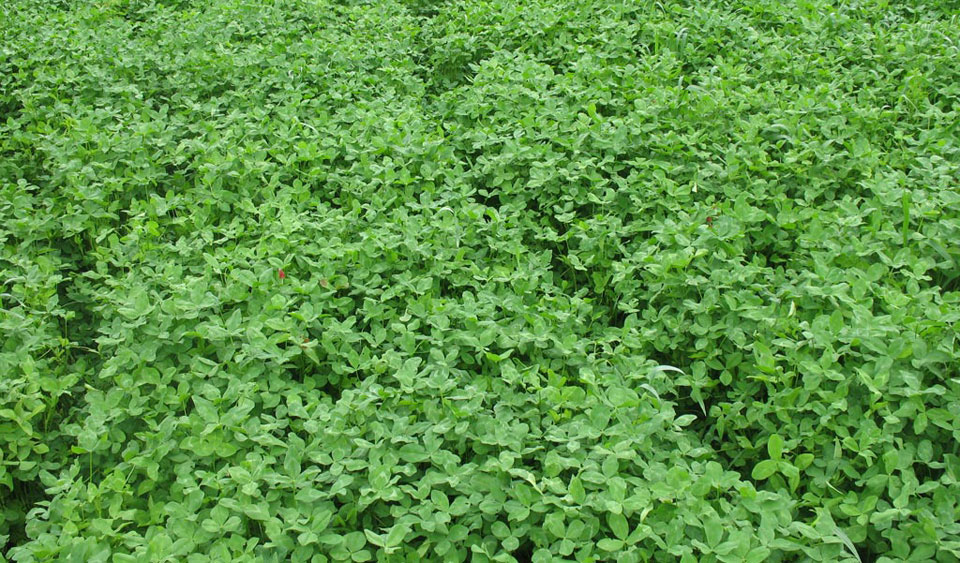
It’s hard to beat the attraction of a lush field of well maintained clover. In most of the U.S. clover is attractive right out of the ground and hardy blends like Non-Typical Clover stay green deep into November, even in the upper Midwest.
Clovers are the most popular food plot planting for a reason. Deer love clover, and its easy to establish without large equipment. To keep from weeds taking over your clover field, you will need to exercise some maintenance routines. Here are the best methods for maintaining a healthy and nutritious clover plot all summer.
Weed Control
Weed control is essential for keeping a clover plot clean. For me, grasses are the main nemesis to a beautiful, lush field of clover. The key to eliminating grasses is spraying them early. I try to limit my herbicide use, but you’ll need it to control grasses like foxtail. Mowing does very little to fight grass competition.
Clethodim is grass specific herbicide and is very effective at eliminating a host of grasses if you spray early enough. If grass in your clover plot is getting more than 3-4 feet tall, mow your entire plot down to the tips of the clover and then spray the entire plot with Clethodim. It will not harm the clover. Clethodim works very slowly, so don’t panic if you visit your plot a week after spraying and wonder why the grasses aren’t dying. It will take a good two weeks to eliminate the grasses.
If you have broadleaf weeds popping up, you can spray Butyrac-200 (separately from Clethodim) on the plot and it will not harm your clover. Again, you will want to catch these weeds early and spray in a timely fashion.
For a one shot spray application, you can spend a bit more money and use Imox or Octavio. These two herbicides eliminate grass competition and broadleaves in one application, instead of having to spray Butyrac and Clethodim separately. However, these two herbicides can harm chicory, so be sure to research for purchasing and always practice safe herbicide application.
If you’re spending time and money on seed and herbicide, it’s a good idea to mix in a surfactant. Perry Battin is a Farm Manager for Drury Outdoors and told me, “We also spray Waypoint which is liquid ammonium sulfate which acts as a surfactant and helps to active the herbicide, helping the spray do what it needs to.”
Feed It
If you haven’t done a soil test on your clover plot, I would highly recommend connecting with a local ag extension or co-op and check to see if they offer a soil test. It typically costs around $25. You’ll need to collect soil from different parts of the plot and drop off a sample for them to analyze. Otherwise, simply send in a sample through Mossy Oak.
Battin said, “I think the number one indicator of a successful clover plot is a soil test to achieve good soil health. You want a clover field that deer prefer over other green food sources nearby.” To do this, you need to have the right information on hand - a soil test will provide that for you.
Whoever completes your soil test, be sure to tell them you want a complete analysis test of the soil, and not just simple results showing the PH level and whether you need N, P or K and the PH level. A few years back, I submitted a soil sample to a local co-op store, and they didn’t do the complete analysis test of organic matters or how much fertilizer I would need to achieve my goals. Be up front with what you’re looking for and tell them what you have planted in the plot. Also, mention the area is a deer food plot because many co-ops aren’t thinking about deer, they deal with farmers on a daily basis and might be inadvertently trying to achieve cattle nutrition goals for you instead.
Your comprehensive soil sample results will tell you exactly how much lime and fertilizer you need to lay down for the first few years. Clover is a legume and fixes it’s own nitrogen, so it’s likely you won’t need much nitrogen, but if you’re co-op only has something like 19-19-19, that can work fine.

Should You Mow?
Many articles have been written, podcasts produced, and pre-hunt conservations have taken place over cups of coffee at deer camp regarding the topic of whether to mow clover or not. Common thinking has always said deer are more attracted to a freshly mowed clover plot. It makes sense to think deer would be attracted to a freshly cut clover field that is rigorously trying to re-grow itself.
But Recent studies from Craig Harper and his team of out the University of Tennessee found no confirmation of deer feeding more in a clover plot that was mowed. They actually found 53% fewer deer detections on trail camera in mowed sections, which resulted in deer simply consuming less forage. The crude protein level was ever so slightly higher in the mowed sections, but not high enough to justify mowing.
Shop Now: 150 lb Capacity Deer Feeder
Mowing your clover plots can be an effective way to temporarily set back broadleaf weed competition, but just don’t think you’re doing whitetails any huge favors nutritionally by mowing clover. It’s important to mow before broadleaves mature and seed out.
While mowing broadleaves can significantly reduce weed competition, spraying is still the best way to eliminate broadleaves and allow your clover to canopy out and shade any emerging weed competition below. If you do mow, be sure to keep the mower parked in your shed during a drought period. Mowing drought stricken clover would only amplify the stress levels on your clover.
Overseeding
If you want to give your 2-3 year old clover plot a boost, overseeding is most effective by frost seeding in late winter or early spring months. If you have bare spots, you can overseed during the summer or early fall but you may not reap those benefits until the following year.
In most cases, I overseed existing clover plots a little bit every year to keep it lush. Battin and Wade Robinson do the same to maintain lush fields for Mark Drury. He said, “We typically get 3-5 years out of a clover plot and we frost seed at half the recommended rate every year.”
Clover is a total powerhouse forage in the whitetail world, but it isn’t something you can plant and forget about. To get a lush field of clover filled with whitetails requires attention and maintenance. But the best part is, this can all be accomplished with small equipment and well-timed care.














